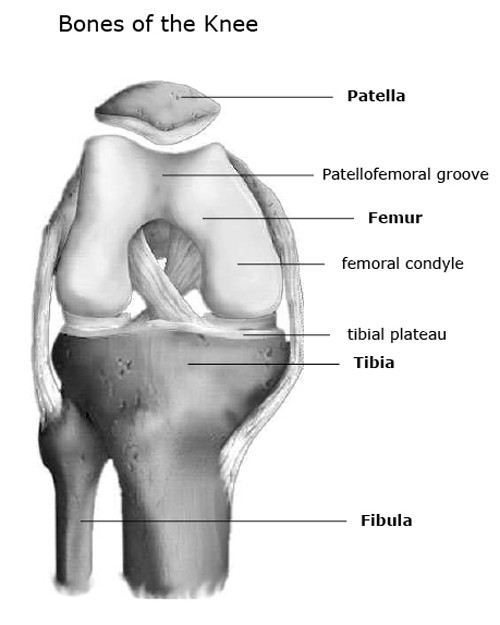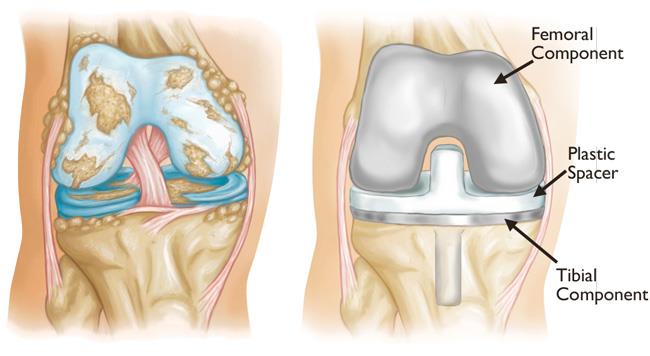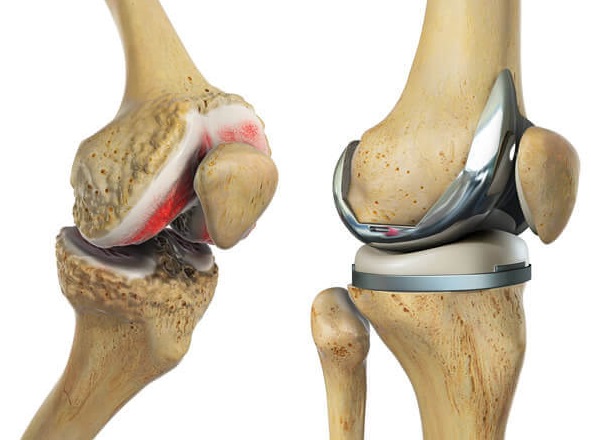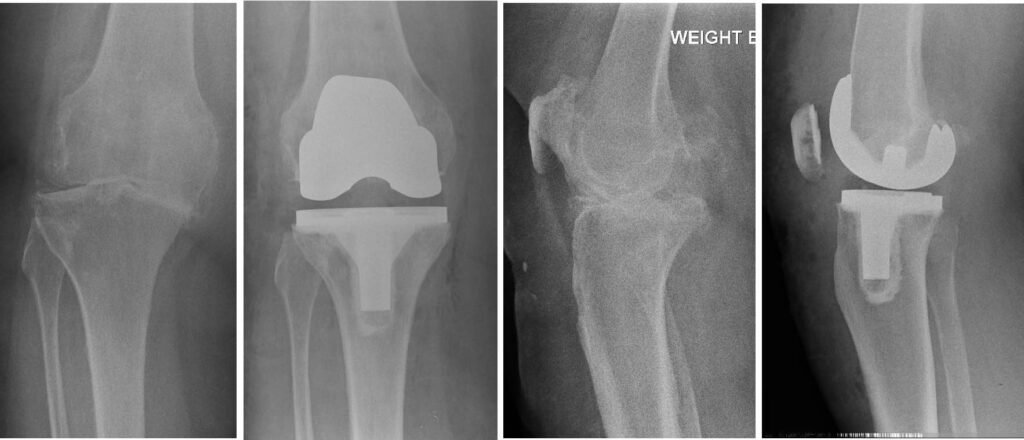Total Knee Replacement
Pain in your knee can significantly affect your quality of life and your ability to perform your normal daily activities. The most common cause of persistent and debilitating knee pain is osteoarthritis. This is a chronic degenerative condition that results in degeneration and loss of the smooth white gristle (articular cartilage) that acts as a low friction bearing surface and normally covers the ends of the thigh bone (femur) and the top of the shin bone (tibia) as well as the under surface of the knee cap (patella).
These surfaces normally glide smoothly over one another as you bend and straighten your knee. When you are walking they also have to support your weight whilst moving. This can generate large stresses on the articular surfaces. This is particularly the case when going up or down stairs or hills as the forces across the knee joint increase significantly, especially underneath the knee cap which often has to withstand over six times your body weight.
This is why if you are overweight trying to lose some weight can often help improve your pain.
However as the arthritis progresses and the smooth articular cartilage degenerates, the ability of the knee to move through a normal range of movement reduces and the different components of the knee start to grate against one another. This often results in pain, swelling and restriction in range of movement. Sometimes a crunching sensation can be felt in the knee (crepitus).
In the early stages of arthritis modifying your activities, physiotherapy and taking simple over-the-counter painkillers can improve your symptoms. However as the degenerative process progresses complete loss of the smooth bearing surface (cartilage) can result in the bone ends grinding bone on bone against each other. This can cause severe pain and stiffness in the knee which can significantly limit normal daily activities.
Unfortunately there is no non-surgical treatment available for advanced osteoarthritis of the knee.
A knee replacement involves removing all of the diseased articular cartilage, re-shaping the ends of the thigh bone (femur) and shin bone (tibia) and capping them with metal implants. A plastic (polyethylene) insert is placed between the metal ends to prevent them from rubbing against each other. Sometimes the back of the knee cap (patella) is also covered with a plastic button. The various components are most often cemented into place using a special grout (bone cement) but occasionally press-fit (uncemented) components are used.
By replacing the worn out irregular articular cartilage with smooth metal and plastic bearing surfaces, pain and movement are improved in the knee allowing a return to normal daily activities.




Patient testimonials
AHA
DJ
RP







